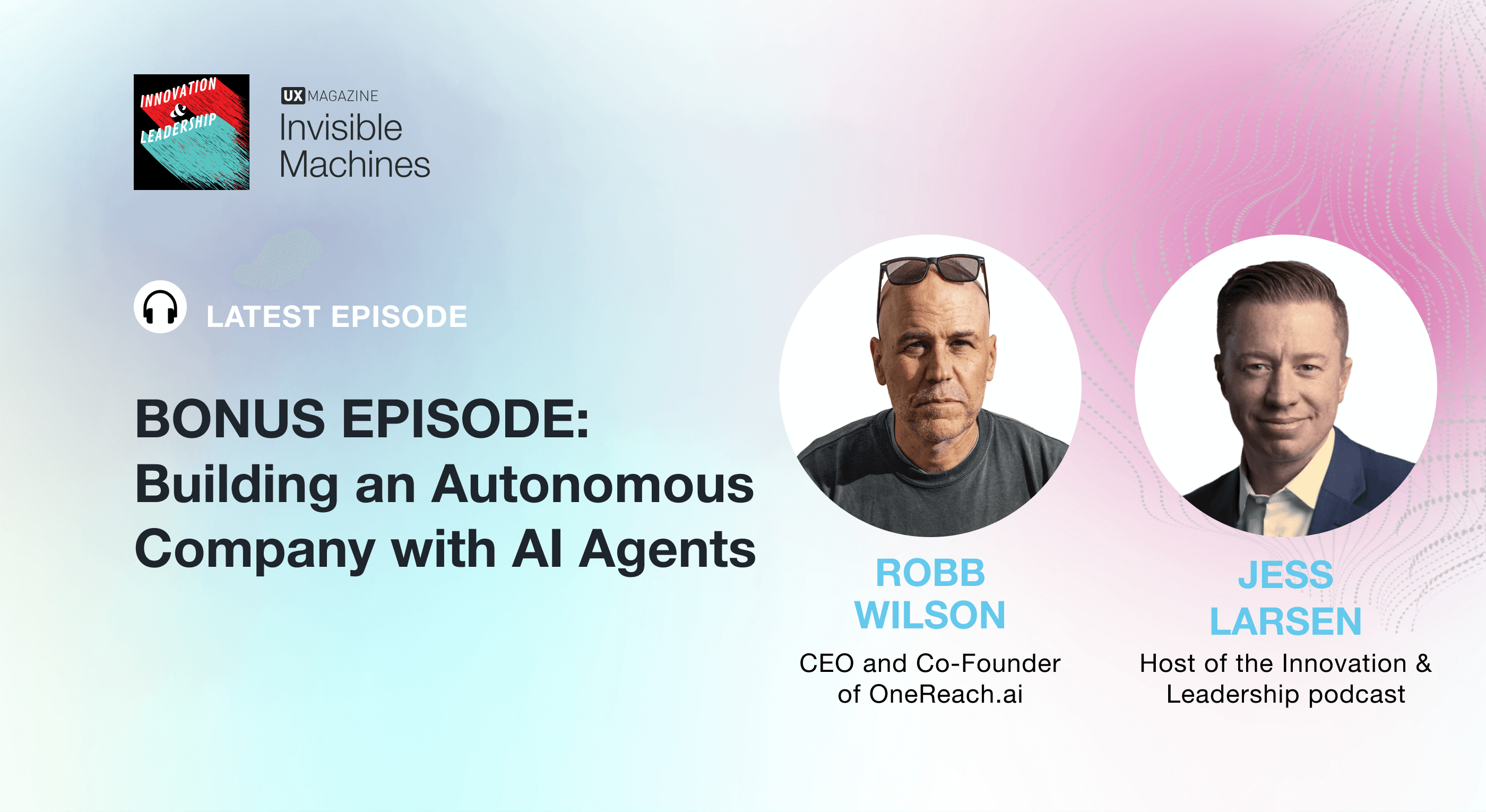Learn more about AI agents and taking an agentic approach to workflow automation at an organizational level. In a recent episode of the Innovation & Leadership podcast, Robb Wilson, co-host of Invisible Machines and CEO and Founder of OneReach.ai, joins Jess Larsen to discuss emergent technologies, with a particular focus on AI agents as they take center stage in organizational growth.
Originally aired in April, this reposted conversation offers invaluable insights into the challenges and opportunities that arise as organizations seek to integrate AI, particularly AI agents, into their operations and processes. Drawing from his extensive experience in leading thousands of AI implementations and from the research in his bestselling book, Age of Invisible Machines, Robb shares hard-earned lessons in AI adoption. He emphasizes the importance of fostering a culture of innovation through a methodical approach: starting small, iterating rapidly, and scaling successfully.
Whether you’re a business leader, tech enthusiast, or curious about the future of AI agents inside of organizations, don’t miss this insightful episode.








